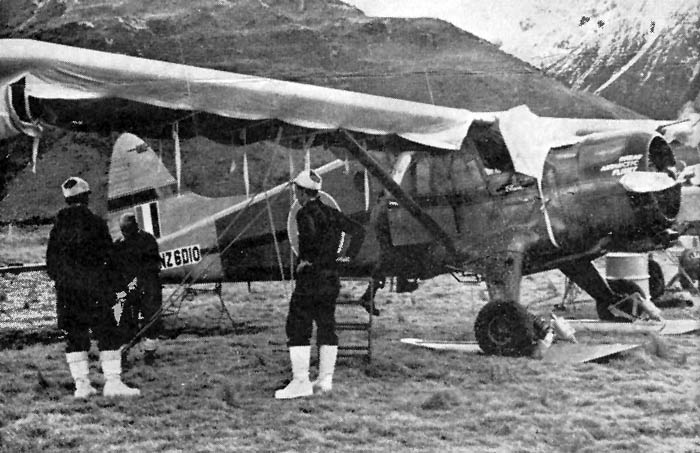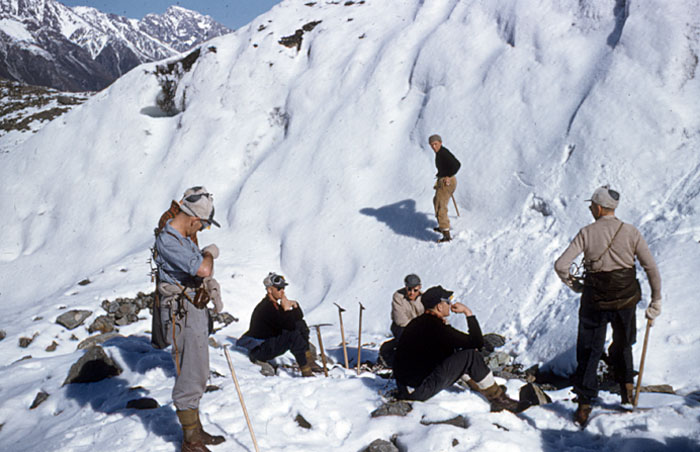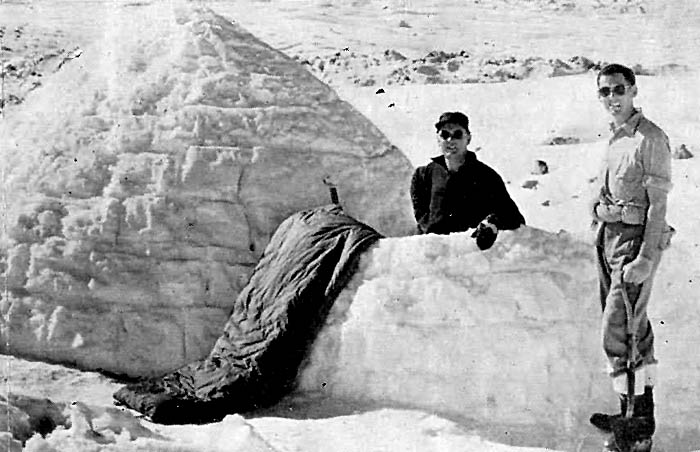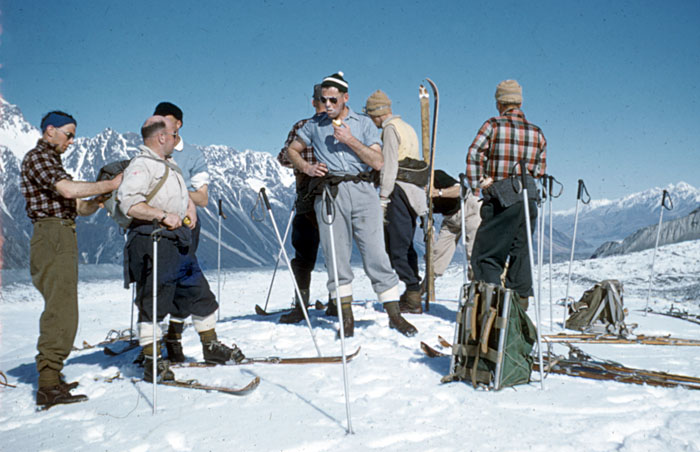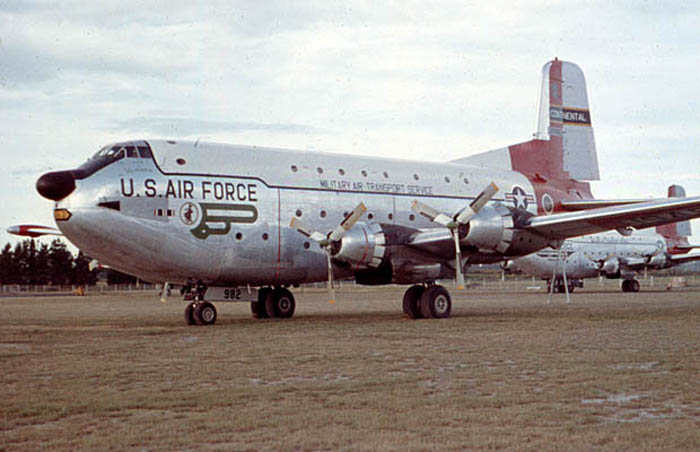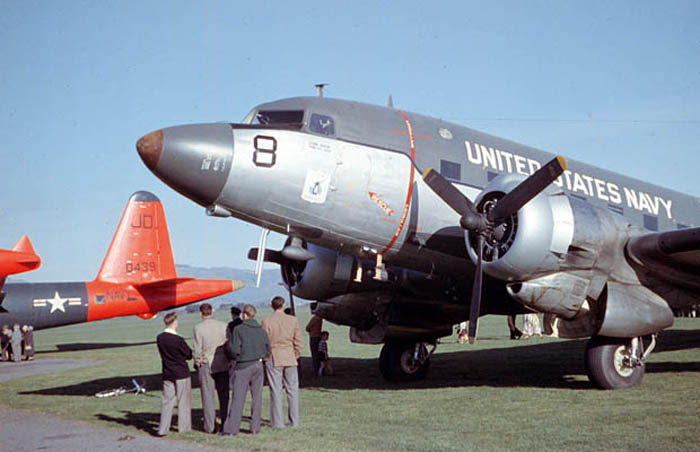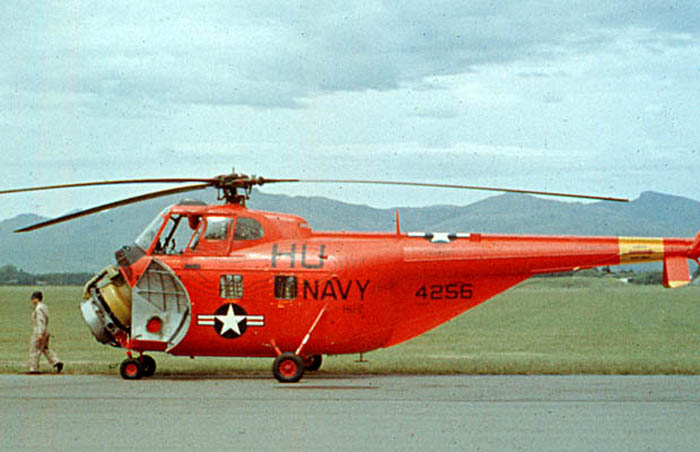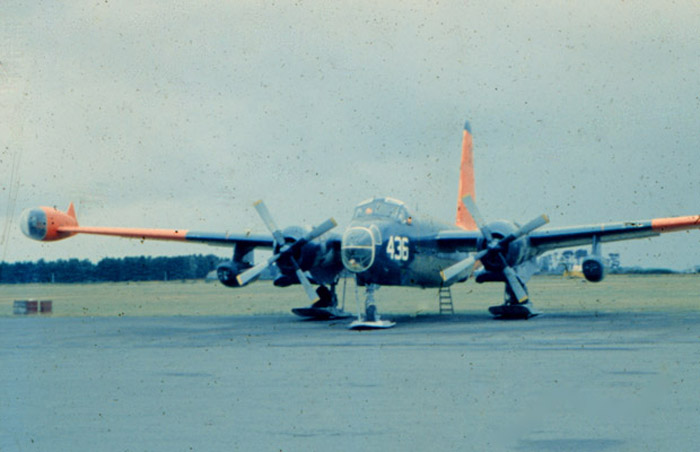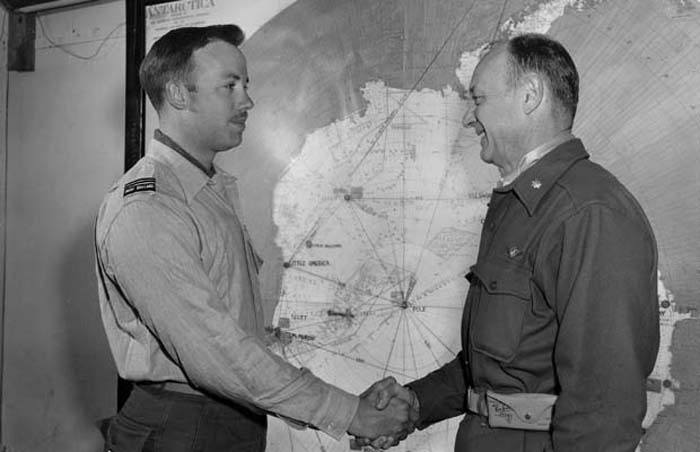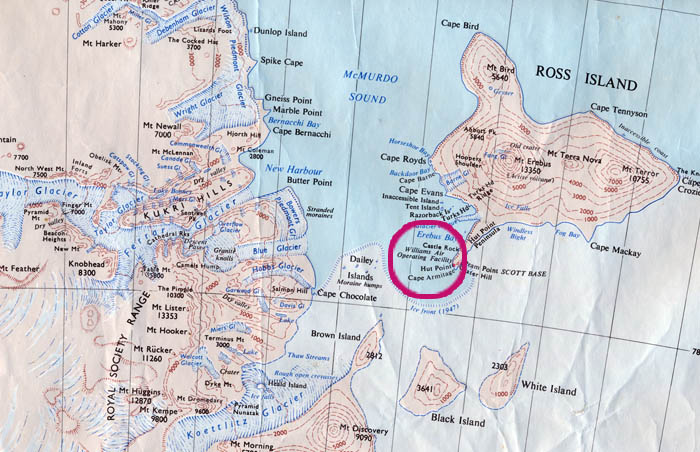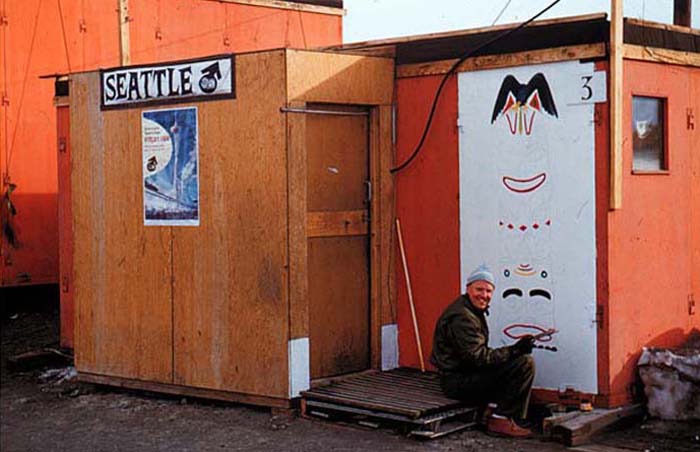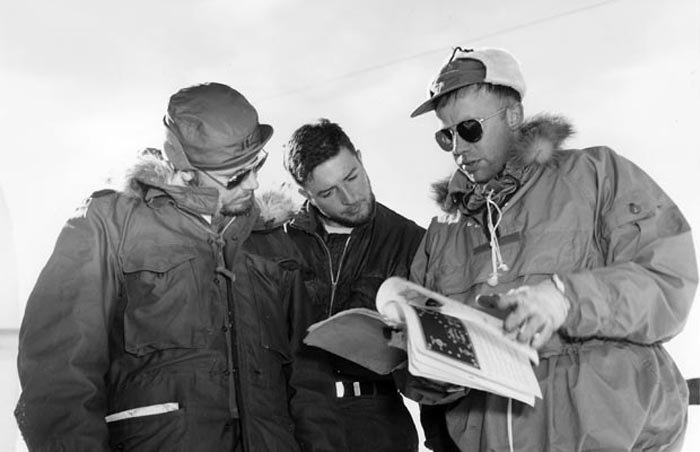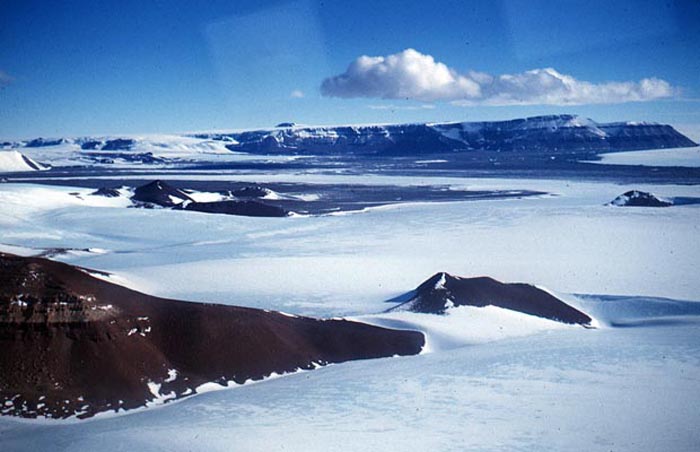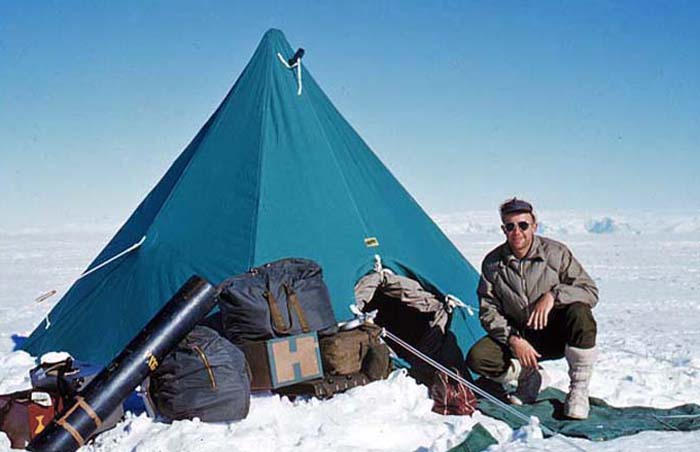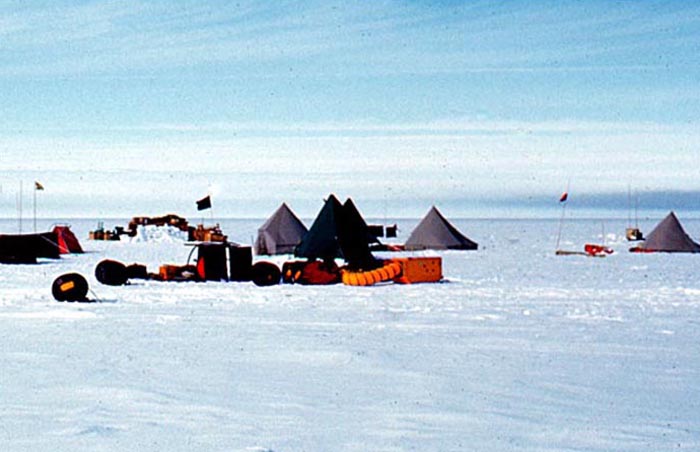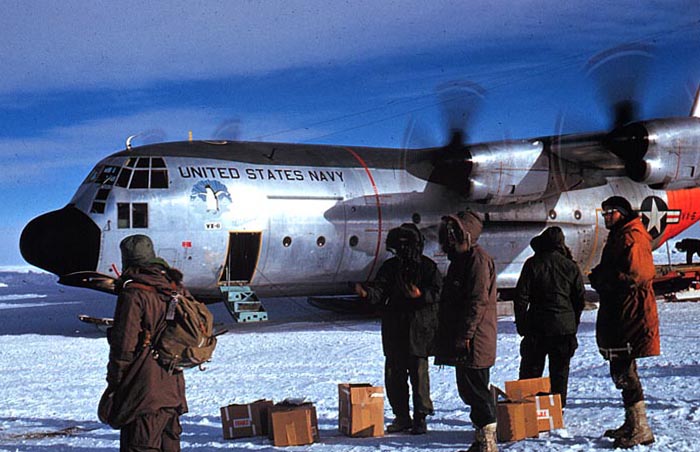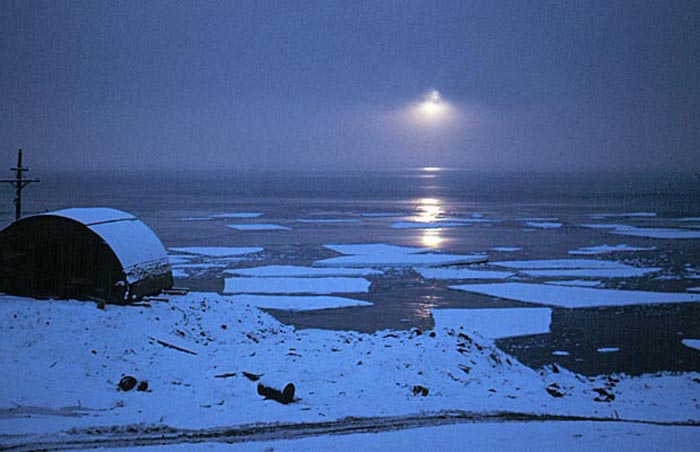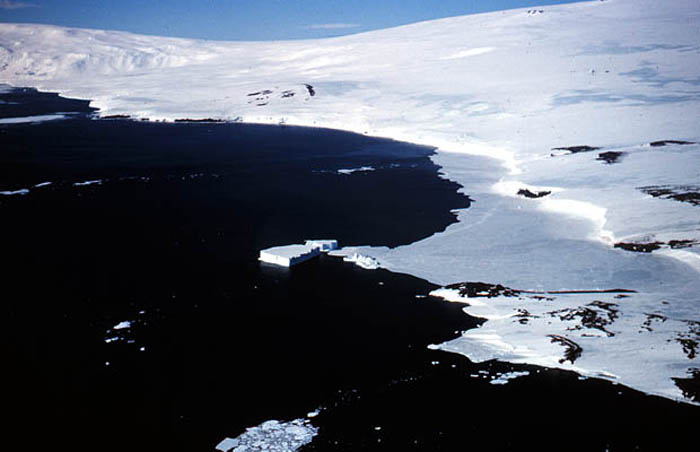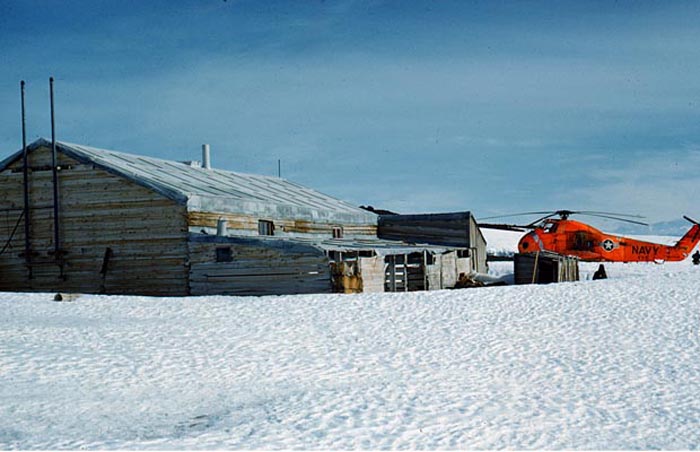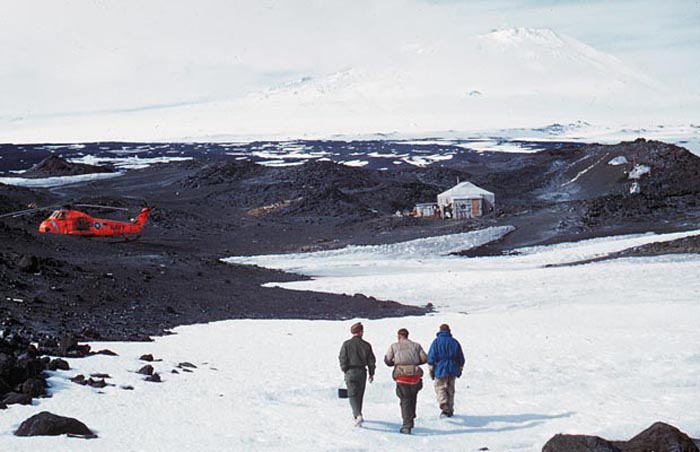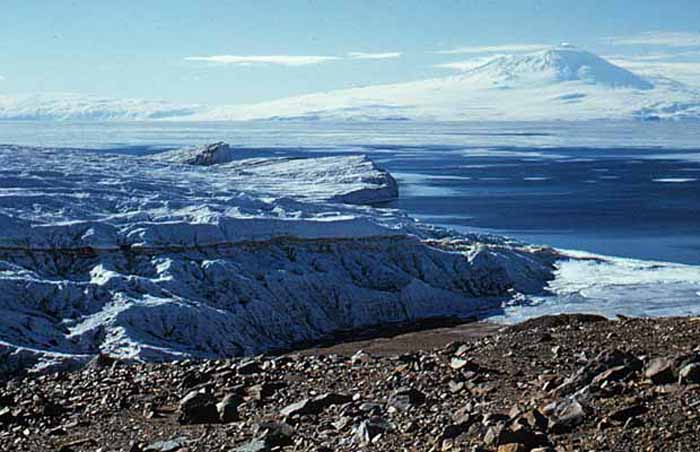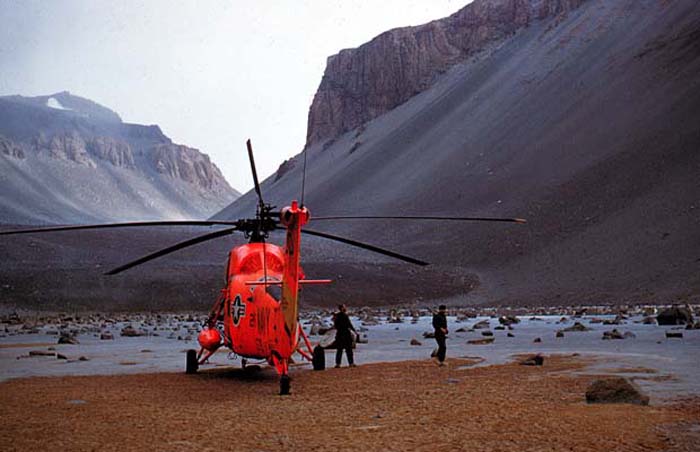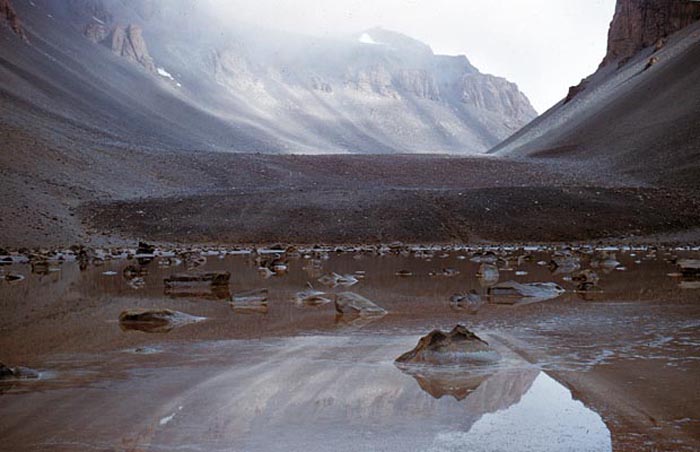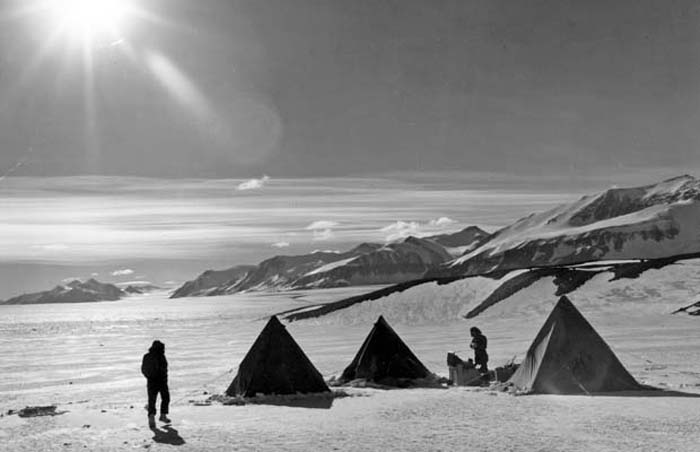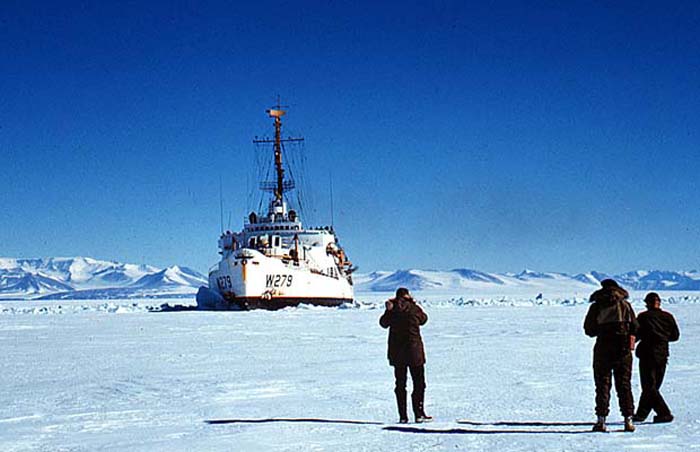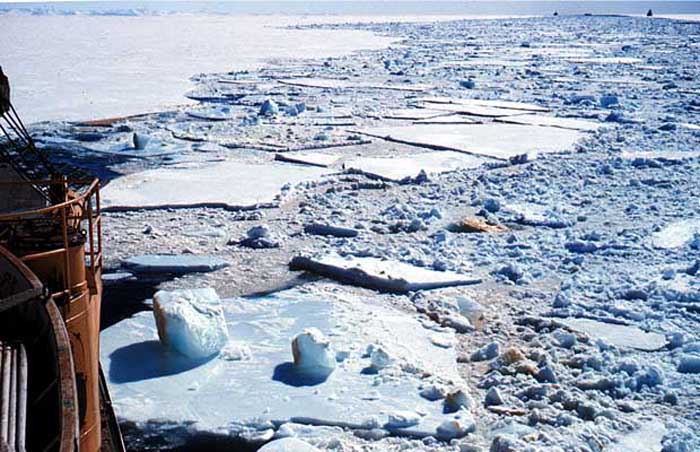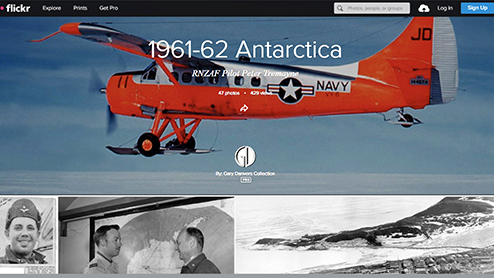Antarctica 1959 -1962
The Beginning 1957-1959In the beginning, it was the arrival of the US Navy and Air Force aircraft at RNZAF Base Wigram in 1957 for Operation Deep Freeze. How exciting it was to be surrounded by "modern" American military aircraft versus the pathetic British junk we were still using from the 1940's. Then, in 1959, as a 20 year old RNZAF officer and pilot, it was my good fortune to be selected for participation in New Zealand's Antarctic program. The extensive specialized training included a lengthy period in New Zealand’s Southern Alps, learning the techniques of glacier travel and survival in extreme cold environments. By today's standards our climbing equipment was primitive: wood-shaft ice axes, ten point iron crampons, manila ropes, no harnesses or mechanical descenders, leather boots and inadequate clothing.
|
To complete the preparation for Antarctic operations we began training for ski-plane take off and landings on the sloping Tasman Glacier. The flying was done in the RNZAF's Antarctic Beaver and Mount Cook Airline's ski-wheel Austers. The so called RNZAF 'Antarctic Auster' remained at Wigram, although it's performance was superior to the Mount Cook aircraft, but lacked the wheel-ski landing gear for use between Mount Cook airfield and the Tasman Glacier. Once in the Antarctic, this Auster would be equipped with basic skis for it's landing gear. In the spring of 1959, the Beaver and Auster were shipped [NZ Navy] to McMurdo Sound with a Unit complement of three pilots [Les Jeffs, Bill Cranfield and Pete Rule] and the maintenance crew under the control of Wally Tarr. Myself and Graeme Derby remained in New Zealand as backup pilots, and on assignment for the following season in the Antarctic [summer 1960/1961]. Early in 1960, the Beaver crashed near the Beardmore Glacier, not far from the South Pole. Fortunately the two pilots, Les Jeffs and Pete Rule survived the accident and were retrieved from the heavily crevassed glacier of impact by a combined effort from the RNZAF Auster and a US Navy R4D5 [DC3]. This accident heralded the end of the RNZAF Antarctic Flight, although a tentative plan was made to replace the Beaver with a DHC Otter [ex-RAF Antarctic aircraft]. With the future of RNZAF participation in New Zealand's Antarctic program in doubt, the Flight members were reassigned to their original units and/or Squadrons. I ended up posted to 41 Squadron [Bristol Freighters] at RAF Base Changi in Singapore, only to make the fatal mistake of again volunteering for Antarctic duty to begin in the summer of 1961/1962. On arrival back in New Zealand [RNZAF Base Wigram], I was advised that the rebirth of the Antarctic Flight had been shelved. Ultimately, the good news was my assignment to the US Navy Squadron VX6 to fly their DHC Otters [UC-1], based at McMurdo Sound for the summer of 1961/62. |
And so it was that I found myself on a VX6 C-130 BL aircraft flying from Christchurch to McMurdo in mid November 1961. Prior to my departure The Squadron checked me out on the Otter they maintained at Christchurch. It felt like a big clumsy Beaver, with a propeller so slow when taxiing, you could almost count the blades! But as a single engined workhorse it certainly could lift a load. At McMurdo, I was assigned to fly with Lt. Ron Bolt USN on numerous missions, initially to and from the Beardmore Glacier Air Facility and later as far north as Lady Newnes Ice Shelf. There were also missions to Little America and Roosevelt Island. Our permanent base was in the "City" at McMurdo [quartered in BOQ3 with a group of US Navy pilots]. However much of the time I spent on the Ice was lived in tents at remote locations. |
Between Otter missions I was able to acquire some copilot seat time in the C-130 BL, the Neptune P2V-7LP, the Douglas R4D-8, the Douglas R4D-5, the Sikorsky HUS S-58 and the Connie R7V-IP. The C-130 flights took me to South Pole Station, New Byrd Station and to and from Christchurch. The S-58 helicopter flights took me to the Dry Valleys and the various huts [on Ross Island] from the early 20th Century expeditions of Scott and Shackleton. The R4D flights included resupply missions, both airdrop and ski-landed, north and south of McMurdo. In late February, I volunteered [again stupidly!] to return from McMurdo to Christchurch on the Icebreaker USS Glacier [GB4]. A terrible seven days at sea with jammed roll control stabilizers. The lesson from all my Antarctic adventures: Don't ever volunteer for anything in the military!
|
|
| Copyright©2024 Peter Tremayne, Reno NV |
Top of Page
latest news2020 | latest news2019 | latest news2018 | latest news2017 | home | main players | contact us | sierra nevada | jmt access map | jmt planning | 2024equipment | jmt schedules | jmt2016 | jmt 2015 | jmt 2014 | jmt 2013 | jmt 2012 | jmt 2011 | jmt 2010 | jmt 2009 | jmt 2008 | jmt 2007 | jmt 2006 | jmt 2005 | jmt 2004 | jmt 2002 | mt agassiz | mt sill | mt shasta | matterhorn peak | mt egmont | nz 2016 | mt rainier | mt shuksan | mt jefferson | pct sonora nth | pct tm nth | pct wa nth | mt baker | wonder trail | mera peak | mt adams | goat rocks | cascades 2003 | mt whitney | kaibab trail | presidents | antarctica | hoover pct | recesses | highrte2015 | highrte2016 | denali89 | benson lake | videos mp4 | tremaynes |






